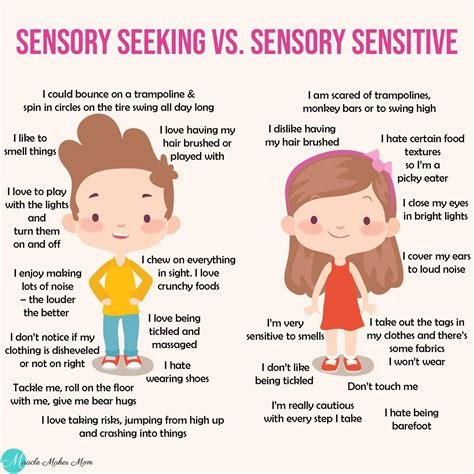Understanding Sensory Processing Issues in Children: Signs and Management
As parents, educators, and caregivers, it’s important to understand the complexities of sensory processing issues in children. These issues can significantly impact a child’s daily life, from their ability to learn and play to their interactions with others. In this blog post, we will explore the signs of sensory processing issues, how they affect daily activities, and the importance of early detection and intervention. We will also delve into the different sensory processing domains and effective strategies for managing these issues. Additionally, we will discuss the importance of creating sensory-friendly environments and collaborating with educators and therapists for support. Promoting self-regulation skills and helping siblings and peers understand and support children with sensory processing issues will also be addressed. By gaining a deeper understanding of these issues and learning how to effectively manage them, we can create a more supportive and inclusive environment for all children.
What are sensory processing issues in children?
Children with sensory processing issues struggle to process and act upon information received through the senses, which can affect their daily functioning and behavior.
These issues can manifest in a variety of ways, such as overreacting to sensory stimuli, seeking sensory input, or avoiding certain sensory experiences.
Common signs of sensory processing issues in children include sensitivity to noise, clothing tags, or food textures, as well as difficulties with balance and coordination.
It is important to understand that sensory processing issues are not the same as sensory processing disorder, as they can range from mild to severe and can coexist with other conditions such as autism or ADHD.
Common signs of sensory processing issues in children
There are several common signs that may indicate a child is experiencing sensory processing issues. One key sign is being overly sensitive to sensory stimuli, such as loud noises, bright lights, or certain textures. This can lead to avoidance of certain activities or environments. Another common sign is seeking out sensory input, such as constantly touching objects or seeking out deep pressure. Some children may also have difficulty with transitions and changes in routine, becoming easily overwhelmed or agitated. In addition, challenges with fine and gross motor skills can be an indicator of sensory processing issues, as can difficulty with attention and concentration.
It’s important to note that every child is unique, so the signs of sensory processing issues can manifest differently in each individual. Some children may exhibit only a few of these signs, while others may display several. However, if a child is experiencing challenges in one or more of these areas, it may be worth considering an evaluation by a qualified professional to determine if sensory processing issues are a contributing factor.
Recognizing these common signs can help parents, educators, and healthcare providers better understand and support children who may be struggling with sensory processing issues. By being aware of these potential indicators, they can take proactive steps to create an environment and provide interventions that can help children thrive and participate more fully in daily activities.
Early recognition and intervention can make a significant difference in addressing sensory processing issues and improving a child’s overall well-being and quality of life. By understanding the common signs and taking appropriate steps to address individual needs, we can ensure that children with sensory processing issues are able to reach their full potential and lead fulfilling lives.
How sensory processing issues affect daily activities
Sensory processing issues can have a significant impact on a child’s daily activities, affecting their ability to engage in various tasks and routines. Children with sensory processing issues may struggle with basic activities such as eating, getting dressed, or participating in play activities. These challenges can often lead to frustration and emotional distress for both the child and their caregivers. Sensory processing issues can also interfere with a child’s ability to focus and participate in school activities, affecting their overall learning and social development.
Children with sensory processing issues may experience sensory overload or sensory seeking behaviors, making it difficult for them to regulate their responses to sensory stimuli. In turn, this can impact their ability to participate in everyday activities, such as attending family gatherings, going to the grocery store, or engaging in recreational activities. For instance, a child with sensory processing issues may have difficulty coping with loud noises, strong smells, or crowded spaces, making it challenging for them to participate in social events or public outings.
Furthermore, sensory processing issues can affect a child’s ability to engage in self-care activities, such as bathing, brushing teeth, or grooming. Additionally, these challenges can impact a child’s sleep patterns, leading to difficulties in falling asleep or staying asleep. These daily struggles can take a toll on a child’s overall well-being and may also impact their relationships with peers, family members, and educators.
It is important for parents, educators, and therapists to recognize the impact of sensory processing issues on daily activities and provide appropriate support and accommodations to help children overcome these challenges. By understanding how sensory processing issues affect daily activities, caregivers can develop effective strategies to promote a child’s participation and engagement in everyday routines, ultimately enhancing their overall quality of life.
The importance of early detection and intervention
Early detection and intervention of sensory processing issues in children can have a significant impact on their overall development and well-being. By identifying these issues at a young age, parents and caregivers can take proactive steps to address the challenges their children may face in various environments.
One of the key benefits of early detection and intervention is the opportunity to provide targeted support and therapy tailored to the child’s specific needs. This can help minimize the impact of sensory processing issues on their daily activities, such as eating, sleeping, and social interactions.
Moreover, early intervention can also contribute to improved long-term outcomes for children with sensory processing issues. Research has shown that children who receive early and consistent support are more likely to develop effective coping strategies and achieve greater independence as they grow older.
Overall, early detection and intervention play a crucial role in ensuring that children with sensory processing issues have the best possible chance of reaching their full potential and leading fulfilling lives.
Understanding the different sensory processing domains
Sensory processing refers to the way our nervous system receives messages from the senses and turns them into appropriate motor and behavioral responses. It involves the ability to take in, process, and organize sensory information from our environment. There are different sensory processing domains that play a crucial role in how children perceive and interact with the world around them.
One of the main sensory processing domains is the tactile system, which is responsible for processing touch sensations. Children with sensory processing issues related to the tactile domain may have difficulty tolerating certain textures or temperatures, may be overly sensitive to touch, or may seek out constant touch experiences.
Another important domain is the vestibular system, which contributes to our sense of balance and spatial orientation. Children with sensory processing issues in this domain may avoid certain movements, have difficulty with coordination, or experience dizziness or disorientation.
The proprioceptive system, which provides feedback about body position and movement, is also a key sensory processing domain. Children with sensory processing issues in this area may have trouble regulating their movements, have difficulty with motor planning, or seek out activities that provide deep pressure input.
Effective strategies for managing sensory processing issues
When it comes to managing sensory processing issues in children, there are several strategies that can be implemented to help improve their daily lives. One effective strategy is the use of deep pressure as a calming technique. This can be achieved through activities such as weighted blankets, compression vests, or deep pressure massages, which can help to reduce sensory overload and promote relaxation.
Another strategy is the implementation of sensory diets, which are personalized activity plans designed to provide the necessary sensory input for a child. This may include activities such as swinging, jumping, or brushing to help regulate sensory responses and improve focus and attention.
Additionally, creating a sensory-friendly environment can greatly benefit children with sensory processing issues. This can involve minimizing sensory triggers, providing quiet spaces, and using visual supports to help children navigate their surroundings and feel more comfortable in their environment.
Lastly, it is important to collaborate with educators and therapists to develop individualized strategies for managing sensory processing issues. By working together, parents, teachers, and therapists can develop effective interventions and support systems to help children thrive in school and at home.
Creating sensory-friendly environments for children
Creating a sensory-friendly environment for children is crucial for their overall well-being and development. It involves making adjustments to the physical environment, routines, and activities to accommodate the sensory needs of children with processing issues. This can significantly reduce their stress, anxiety, and behavioral challenges, allowing them to thrive in various settings.
One important aspect of creating a sensory-friendly environment is to minimize sensory overload. This can be achieved by reducing auditory and visual distractions, providing comfortable seating, using calming colors, and ensuring proper lighting. By addressing these factors, children with sensory processing issues can feel more at ease and focused in their surroundings.
Another key element is to offer a variety of sensory experiences. This includes incorporating sensory-friendly materials such as fidget toys, weighted blankets, and textured surfaces. By providing these options, children can engage in activities that meet their sensory needs, promoting self-regulation and participation in various tasks.
It’s also essential to involve parents, teachers, and therapists in the process of creating sensory-friendly environments. Collaboration allows for a holistic approach, where the needs of each child are thoroughly understood and accommodated. By working together, it’s possible to implement strategies that support children with sensory processing issues across different settings, including home, school, and therapy environments.
Collaborating with educators and therapists for support
Collaborating with educators and therapists is essential in providing comprehensive support for children with sensory processing issues. By working together, these professionals can create a well-rounded approach to addressing the unique needs of each child.
When educators and therapists collaborate, they can share valuable insights and observations about a child’s behavior and performance in different settings. This collaboration allows them to develop customized strategies and interventions that can be implemented both at school and during therapy sessions.
Furthermore, educators and therapists can exchange information about the progress of the child, allowing for a more cohesive and coordinated approach to their care. This teamwork ensures that the child’s needs are being met consistently, whether they are in the classroom or receiving therapy.
Additionally, collaborating with educators and therapists can also benefit the child’s parents or caregivers, as they are able to gain a deeper understanding of the strategies being used and can reinforce them at home. This unified effort between educators, therapists, and parents creates a supportive network that is crucial in helping the child navigate their sensory processing challenges.
Promoting self-regulation skills in children with sensory processing issues
Children with sensory processing issues often struggle with self-regulation skills, which can impact their daily lives and interactions. It is crucial to provide them with the support and resources they need to develop and improve these essential skills.
One effective strategy for promoting self-regulation in children with sensory processing issues is to create a consistent and structured environment. This can help them feel more secure and in control, reducing their stress and anxiety levels.
Additionally, incorporating sensory-friendly activities into their daily routines can help children regulate their emotions and behavior. These activities can include sensory breaks, mindfulness exercises, and deep pressure input techniques.
Finally, it is important to collaborate with educators, therapists, and caregivers to create a comprehensive plan for promoting self-regulation skills in children with sensory processing issues. By working together and implementing consistent strategies, we can help these children thrive in various environments.
Helping siblings and peers understand and support children with sensory processing issues
When a child is diagnosed with sensory processing issues, it not only affects the child but also has an impact on their siblings and peers. It’s important for siblings and peers to understand the challenges that children with sensory processing issues face, and to support them in their daily activities, interactions, and environments.
One effective way to help siblings and peers understand and support children with sensory processing issues is by providing them with education and information. It’s important to explain to them what sensory processing issues are, how they affect the child, and what they can do to help. This can help create empathy and understanding among siblings and peers, and foster a supportive environment for the child with sensory processing issues.
Additionally, promoting open communication between the child, their siblings, and peers is essential. Encouraging siblings and peers to ask questions, share their experiences, and express their concerns can help create a positive and inclusive environment for the child with sensory processing issues. This can also help reduce misunderstanding and misconceptions about the child’s behavior and challenges.
Lastly, it’s important to encourage siblings and peers to participate in activities and interventions that can benefit the child with sensory processing issues. This may include joining in sensory-friendly activities, practicing calming techniques with the child, and offering support and encouragement during challenging situations. By actively involving siblings and peers in the child’s journey, it can help them develop empathy, patience, and understanding towards the child’s sensory processing issues.
Frequently Asked Questions
What are sensory processing issues in children?
Sensory processing issues in children refer to difficulties in organizing and making sense of information received through the senses. This can affect their ability to respond to sensory input in an appropriate way.
What are common signs of sensory processing issues in children?
Common signs of sensory processing issues in children include over-sensitivity or under-sensitivity to sensory input, difficulty with transitions and changes, and challenges with motor skills and coordination.
How do sensory processing issues affect daily activities?
Sensory processing issues can affect a child’s ability to participate in daily activities such as eating, dressing, playing, and socializing. They may struggle with certain textures, sounds, or movements, making these activities more challenging.
Why is early detection and intervention important for sensory processing issues?
Early detection and intervention can help children receive the support they need to develop coping strategies and improve their ability to participate in daily activities. It can also prevent the issues from impacting their self-esteem and emotional well-being.
What are the different sensory processing domains to understand?
The different sensory processing domains include tactile (touch), auditory (sound), visual (sight), olfactory (smell), gustatory (taste), vestibular (movement and balance), and proprioceptive (body awareness).
What are effective strategies for managing sensory processing issues?
Effective strategies for managing sensory processing issues include sensory activities, environmental modifications, sensory diets, and behavior strategies. These can help children regulate their sensory responses and improve their ability to participate in daily activities.
How can sensory-friendly environments be created for children?
Sensory-friendly environments can be created by minimizing sensory distractions, providing sensory tools and equipment, and creating predictable and structured routines. This can help children feel more comfortable and supported in their surroundings.
How can educators and therapists collaborate to support children with sensory processing issues?
Educators and therapists can collaborate by sharing information and strategies, creating individualized education plans (IEPs), and providing training and resources for addressing sensory processing issues in the classroom and therapy settings.
How can self-regulation skills be promoted in children with sensory processing issues?
Self-regulation skills can be promoted through strategies such as deep breathing, mindfulness activities, and sensory breaks. Teaching children how to recognize and manage their sensory responses can help them become more independent and confident in their abilities.
How can siblings and peers understand and support children with sensory processing issues?
Siblings and peers can understand and support children with sensory processing issues by learning about sensory processing, practicing patience and empathy, and participating in sensory-friendly activities together. This can create a supportive and inclusive environment for the child with sensory challenges.






